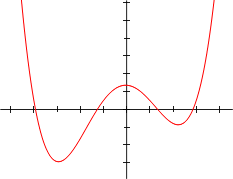Global optimum

In mathematics, a global optimum is a selection from a given domain which provides either the highest value (the global maximum) or lowest value (the global minimum), depending on the objective, when a specific function is applied. For example, for the function
- f(x) = −x2 + 2,
defined on the real numbers, the global maximum occurs at x = 0, where f(x) = 2. For all other values of x, f(x) is smaller.
For purposes of optimization, a function must be defined over the whole domain, and must have a range which is a totally ordered set, in order that the evaluations of distinct domain elements are comparable.
By contrast, a local optimum is a selection for which neighboring selections yield values that are not greater (for a local maximum) or not smaller (for a local minimum). The concept of a local optimum implies that the domain is a metric space or topological space, in order that the notion of "neighborhood" should be meaningful.
If the function to be maximized is quasi-concave, or if the function to be minimized is quasi-convex, then a local optimum is also the global optimum.
See also